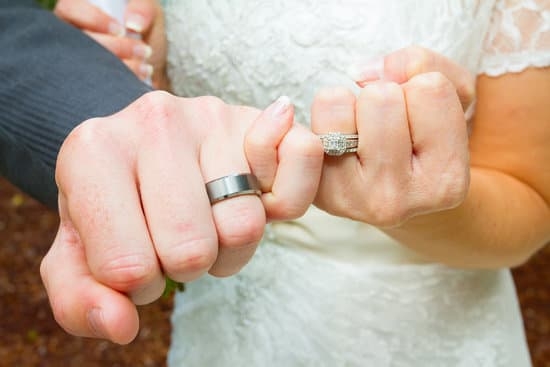Jewelry is not just an accessory; for many people, it holds sentimental value and serves as a representation of personal style and status. To ensure that your jewelry remains beautiful and lasts for generations, it is essential to provide proper care. This article will guide you on how to care for your precious pieces, preserving their beauty and value.
Caring for jewelry involves understanding the different types of jewelry and their specific maintenance needs. Each material requires unique care to prevent damage or tarnish. Additionally, proper storage techniques are crucial to keeping your jewelry safe, tangle-free, and free from scratches or other forms of damage.
Cleaning your jewelry regularly is also important in maintaining its shine and brilliance. From gemstones to metals, each piece may require specific cleaning methods to remove dirt, oils, or other substances that can dull its appearance. We will provide you with a step-by-step guide on how to clean your jewelry effectively without causing any harm.
Furthermore, we will discuss common mistakes to avoid while handling and wearing jewelry. By knowing what not to do, you can prevent accidental damage or loss of your beloved pieces. We will also share tips for preventing and dealing with jewelry tarnish, a common issue faced by many jewelry owners.
To embark on this journey of proper jewelry care, you need the right tools and supplies at hand. We will guide you in building your own jewelry care kit so that you have everything needed to keep your collection in impeccable condition.
Understanding the Different Types of Jewelry and Their Maintenance needs
When it comes to caring for your jewelry, it’s important to understand that different types of jewelry require different maintenance needs. Each type of jewelry is made with different materials and may have specific cleaning and care instructions. By understanding the diverse needs of your jewelry, you can ensure its longevity and keep it looking beautiful for years to come.
Gold Jewelry
Gold jewelry is a popular choice due to its durability, but it still requires proper care. To clean gold jewelry, use a mild dish soap or jewelry cleaning solution mixed with warm water. Gently scrub the piece with a soft toothbrush and rinse thoroughly. Avoid using harsh chemicals or abrasive materials that could damage the gold. Additionally, store your gold jewelry in a separate compartment or pouch to prevent scratching or tangling.
Silver Jewelry
Silver is a delicate metal that can tarnish over time if not properly cared for. To clean silver jewelry, use a silver polishing cloth or a silver cleaning solution specifically designed for silver items. Avoid wearing silver jewelry when swimming or exercising as exposure to moisture and perspiration can accelerate tarnish. Store your silver pieces in an airtight container or anti-tarnish bag to slow down the tarnishing process.
Gemstone Jewelry
Gemstone jewelry includes any piece of jewelry that features gemstones such as diamonds, rubies, emeralds, sapphires, etc. These gemstones vary in hardness and sensitivity to certain chemicals. It’s essential to consult specific care instructions for each type of gemstone in your jewelry before cleaning them. In general, avoid exposing gemstone jewelry to harsh chemicals like bleach or ammonia. Instead, gently clean them with warm water and a soft cloth.
Pearl Jewelry
Pearls are organic gemstones that require special care to maintain their lustrous appearance. Avoid applying any chemical products, including hairspray or perfume, to pearls as they can damage their surface. After wearing pearls, gently wipe them with a soft, damp cloth to remove any dirt or sweat. Store pearl jewelry separately from other pieces to prevent scratches.
By understanding the maintenance needs of your different types of jewelry, you can ensure that each piece remains in top condition for years to come. Applying the appropriate cleaning and storage techniques will help preserve the beauty and value of your jewelry collection.
Proper Storage Techniques for Jewelry
Proper storage techniques are crucial for maintaining the beauty and longevity of your jewelry. By storing your pieces correctly, you can prevent them from getting tangled, scratched, or damaged. Here are some essential tips to help you keep your jewelry safe and tangle-free:
Separate and Organize
The first step in proper jewelry storage is separating and organizing your pieces. You should store each item individually to prevent tangling and potential damage. Use small individual compartments or compartments with dividers in a jewelry box or case to keep everything organized. If you don’t have a specialized jewelry box, you can also use small cloth pouches or zip-lock bags for each piece.
Avoid Excessive Movement
When storing your jewelry, it is important to minimize excessive movement to prevent scratching or tangling. Lay necklaces flat inside the compartment rather than hanging them, as hanging can cause them to tangle easily. Additionally, avoid placing heavy items on top of delicate pieces that could potentially crush or damage them.
Consider Separating by Material
Certain types of jewelry require extra attention due to their specific materials. For example, storing sterling silver alongside other metals may result in tarnishing over time. To avoid this, consider separating different types of materials into designated storage areas or using anti-tarnish strips that absorb moisture and prevent tarnish.
Maintain Consistent Environment
Another crucial aspect of proper storage is maintaining a consistent environment for your jewelry. Avoid exposing your pieces to excessive heat, humidity, direct sunlight, or extreme temperature changes as these conditions can cause damage over time. It is best to store your jewelry in a cool, dry place away from windows and sources of heat.
By following these proper storage techniques for your jewelry, you can ensure that it remains safe and tangle-free while preserving its beauty for years to come. Taking the time to organize, separate, and store your pieces correctly will help maintain their quality and prevent unnecessary damage.
Cleaning Your Jewelry
Cleaning your jewelry regularly is essential for keeping it looking its best and maintaining its shine. Here is a step-by-step guide to help you clean different types of jewelry effectively:
- Gather the necessary supplies: Before you start cleaning, ensure that you have all the required supplies. This may include mild soap or jewelry cleaner, soft-bristled toothbrush, lint-free cloth, and a small bowl.
- Check for any loose stones or prongs: Before cleaning your jewelry, carefully inspect it for any loose stones or prongs. If you find any, avoid cleaning the piece at home and take it to a professional jeweler for repair.
- Prepare a cleaning solution: Depending on the type of jewelry, prepare a suitable cleaning solution. For gold or platinum jewelry, you can use warm water mixed with a few drops of mild soap. Silver jewelry can be cleaned with a silver-specific cleaner or by using toothpaste mixed with water to form a paste.
- Soak and scrub: Place your jewelry in the cleaning solution and let it soak for a few minutes. Use a soft-bristled toothbrush to gently scrub the piece, paying attention to hard-to-reach areas and crevices.
- Rinse and dry: Once you are done scrubbing, rinse your jewelry thoroughly under running water to remove any soap residue. Make sure to hold the piece securely during rinsing to prevent it from slipping down the drain. After rinsing, pat dry with a lint-free cloth or allow it to air dry completely before storing.
- Polish if necessary: For extra shine, you can use a polishing cloth specifically designed for jewelry or apply a small amount of jeweler’s rouge onto a cloth and gently rub it onto your piece.
Remember to always refer to the manufacturer’s instructions for specific care recommendations for your particular piece of jewelry.
Cleaning your jewelry regularly is key in preventing dirt build-up and maintaining its shine. By following these steps, you can keep your jewelry looking its best for years to come.
Common Mistakes to Avoid while Handling and Wearing Jewelry
Wearing jewelry is a great way to enhance your style and express your personal taste. However, it is important to handle and wear jewelry with care to avoid common mistakes that could potentially damage or diminish its beauty. Here are some common mistakes to avoid:
- wearing jewelry during physical activities: It is important to remove your jewelry before engaging in physical activities such as exercising, playing sports, or doing household chores. These activities can expose your jewelry to unnecessary stress, chemicals, or moisture, which can lead to damage or tarnish.
- Using harsh chemicals on jewelry: While cleaning your jewelry is important for maintenance, using harsh chemicals or cleaners can cause more harm than good. Avoid using substances such as bleach, ammonia, or strong detergents on delicate gemstones or metals. Instead, opt for gentle cleaning options specifically designed for jewelry.
- Neglecting regular cleaning and maintenance: Over time, oils from the skin, dust, and dirt can accumulate on your jewelry causing it to lose its shine and brilliance. Therefore, it is crucial to regularly clean and maintain your pieces. Follow the appropriate cleaning methods based on the materials of your jewelry and consider professional cleaning services periodically.
| Mistake | Consequences |
|---|---|
| Wearing jewelry during physical activities | Potential damage due to stress or exposure to chemicals/moisture |
| Using harsh chemicals on jewelry | Possible harm/tarnish of delicate gemstones or metals |
| Neglecting regular cleaning and maintenance | Jewelry loses its shine over time due to accumulated oils/dirt |
By avoiding these common mistakes, you can ensure that your jewelry maintains its beauty and shine for years to come. Taking proper care of your jewelry not only preserves its value but also allows you to enjoy wearing it with confidence and pride.
Tips for Preventing and Dealing with Jewelry Tarnish
Tarnish is a common issue that affects many types of jewelry, particularly those made of silver or certain metals like brass or copper. When jewelry tarnishes, it can lose its shine and appear dull or discolored. However, with proper care and preventive measures, you can minimize tarnish and keep your jewelry looking its best.
Preventing Tarnish:
- Store your jewelry properly: One effective way to prevent tarnish is to store your jewelry in airtight containers or bags. This helps to minimize exposure to air, moisture, and other elements that can cause tarnishing.
- Keep away from harsh chemicals: Avoid exposing your jewelry to harsh chemicals such as cleaning agents, hairspray, perfume, or chlorine. These substances can accelerate tarnishing.
- Remove before activities: Take off your jewelry before engaging in activities that may expose it to excessive moisture or abrasion, such as swimming, exercising, or cleaning.
Dealing with Tarnish:
- Use special polishing cloths: When you notice tarnish on your jewelry, use a special polishing cloth designed for removing tarnish. These cloths are gentle yet effective in restoring the shine of your jewelry.
- Try baking soda paste: For stubborn tarnish stains on silver jewelry, create a paste using baking soda and water. Apply the paste to the tarnished areas and gently rub with a soft cloth or sponge until the tarnish is removed.
- Seek professional help when needed: If you’re unsure about how to effectively remove tarnish from your jewelry or if the tarnish remains despite your efforts, it may be best to seek professional help from a jeweler who specializes in cleaning and restoring jewelry.
By following these tips for preventing and dealing with jewelry tarnish, you can ensure that your precious pieces retain their luster and beauty for years to come.
| Preventing Tarnish | Dealing with Tarnish |
|---|---|
| Store your jewelry properly: in airtight containers or bags | Use special polishing cloths to remove tarnish |
| Avoid exposure to harsh chemicals | Create a baking soda paste and rub gently on tarnished areas |
| Remove jewelry before activities that expose it to moisture or abrasion | Seek professional help when needed |
Essential Jewelry Maintenance Tools and Supplies
Taking care of your jewelry isn’t just about proper storage and cleaning techniques; it also requires having the right tools and supplies at hand. Building a jewelry care kit can help you maintain the beauty and longevity of your pieces. Here are some essential maintenance tools and supplies to include in your kit:
- Jewelry Cleaner: A good jewelry cleaner is a must-have for keeping your pieces looking their best. Look for a mild, non-abrasive cleaner specifically designed for the type of metal or gemstone in your jewelry. Follow the instructions carefully to avoid damaging delicate pieces.
- Soft Brushes: Soft brushes, such as toothbrushes or dedicated jewelry brushes, are great for removing dirt and grime from hard-to-reach places. Use them with mild soap or jewelry cleaner to gently scrub away any buildup.
- Polishing Cloth: A polishing cloth made specifically for jewelry is perfect for removing tarnish and restoring shine to your pieces. It’s important to use a soft cloth that won’t scratch the metal or gemstones.
- Microfiber Cloth: In addition to a polishing cloth, it’s also helpful to have a microfiber cloth on hand for general cleaning and wiping down your jewelry after wearing it. The soft material won’t leave lint or scratches behind.
- Tweezers: For handling small chains, clasps, or other tiny components, tweezers can be incredibly useful. They provide precision when untangling chains or making delicate adjustments.
- Jewelry Pouches or Boxes: Proper storage is crucial in preventing damage to your jewelry. Invest in pouches or boxes lined with anti-tarnish fabric to protect your pieces from moisture, scratches, and tarnish.
- Ziploc Bags: It may sound unconventional, but Ziploc bags can actually be quite handy when traveling with jewelry. Use them to separate individual pieces and prevent tangling.
- Extra Earring Backs: Earring backs have a tendency to disappear, so keeping a supply of extras in your kit ensures that you won’t be left with one earring and no way to secure it.
By having these essential tools and supplies in your jewelry care kit, you’ll be well-equipped to handle routine cleaning and maintenance tasks. Remember, prevention is key when it comes to caring for your jewelry, so make sure to store it properly and avoid exposing it to harsh chemicals or excessive heat. With the right tools and knowledge, you can preserve the beauty and value of your jewelry for years to come.
Seeking Professional Help
When it comes to caring for your precious jewelry, there may come a time when you need to seek professional help for servicing or repairs. Understanding when and why you should take your jewelry to a professional can prevent further damage and ensure its longevity. Let’s explore the situations that call for professional assistance.
One of the most common reasons to seek professional help is when your jewelry needs repair. Whether it’s a broken clasp, a loose stone, or a damaged prong, attempting to fix it yourself can lead to irreversible damage. Professional jewelers have the expertise and tools necessary to handle delicate repairs with precision. They will be able to assess the issue and provide the appropriate repair techniques, ensuring that your jewelry is restored to its original condition.
Additionally, if you have inherited or acquired vintage or antique jewelry, it is crucial to consult a professional jeweler for servicing. These pieces often require specialized care due to their age and unique craftsmanship. Professionals can thoroughly clean and inspect vintage jewelry while maintaining its integrity.
Another instance where seeking professional help is necessary is when you want to resize or modify your jewelry. Maybe you’ve lost weight or gained weight, or perhaps you want to turn an old family heirloom into a more modern piece. Jewelers have the knowledge and skillset required to make these modifications without compromising the structural integrity of your jewelry.
The Dos and Don’ts of Traveling with Jewelry
Traveling with jewelry can be a bit nerve-wracking, as you want to ensure that your precious pieces remain secure and intact throughout your journey. By following a few dos and don’ts, you can enjoy your travels without worrying about the safety of your jewelry.
Firstly, when traveling with jewelry, it is important to always keep it with you in your carry-on luggage. Never put valuable jewelry in checked baggage as it may get lost or stolen. Keeping your jewelry close to you also allows you to monitor its condition and ensure its security.
Additionally, it is advisable to store each piece of jewelry separately in a soft pouch or a padded compartment within your travel bag. This will prevent them from getting scratched or damaged by rubbing against each other during transport. Furthermore, consider using a jewelry organizer or roll-up case specifically designed for travel, which provides individual compartments and prevents tangling.
Another important tip is to avoid wearing flashy or extravagant jewelry while traveling. While it may be tempting to show off your precious accessories, doing so could draw unwanted attention and potentially make you a target for theft. Opt for more subtle pieces that still add elegance to your outfit without attracting too much attention.
Lastly, make sure not to forget about insuring your jewelry before embarking on any trip. Even if you take all the necessary precautions, accidents can still happen. Having proper insurance coverage will give you peace of mind knowing that if something were to happen, you are financially protected.
By following these simple dos and don’ts when traveling with jewelry, you can ensure the safety and integrity of your precious pieces while enjoying worry-free adventures wherever you go.
Conclusion
In conclusion, caring for your jewelry is essential in preserving its beauty and value. By understanding the different types of jewelry and their maintenance needs, you can properly take care of each piece. Proper storage techniques, such as keeping it safe and tangle-free, will help prevent damage. Additionally, regular cleaning using a step-by-step guide will maintain its shine.
It is important to avoid common mistakes while handling and wearing jewelry to prevent any accidental damage or loss. Tarnish can also be prevented by following certain tips and techniques. Building a jewelry care kit with essential tools and supplies is beneficial for maintaining your precious pieces.
While taking care of your jewelry on your own is important, there may be times when seeking professional help is necessary. Knowing when and why to get your jewelry serviced or repaired can save you from further damage or loss. Lastly, if you need to travel with your jewelry, it is crucial to learn the dos and don’ts to ensure its security and intactness.
By following these guidelines and tips, you are empowered to take care of your jewelry effectively. Remember that proper care not only preserves its beauty but also maintains its value over time. So invest time in learning how to care for your jewelry to enjoy its sparkle and significance for years to come.
Frequently Asked Questions
How do you keep jewelry from tarnishing?
To prevent jewelry from tarnishing, there are several steps you can take. Firstly, it is important to keep your jewelry clean and dry. After wearing your jewelry, make sure to remove any dirt or oils by gently wiping it with a soft cloth.
It is also beneficial to store each piece of jewelry in separate compartments or pouches to avoid scratching or tangling. Additionally, you can use anti-tarnish strips or silica gel packets in your jewelry storage to minimize tarnish-causing moisture in the air. Avoid exposing your jewelry to chemicals such as perfumes, lotions, and cleaning products, as they can accelerate tarnishing.
How do you keep jewellery in good condition?
Maintaining the good condition of jewellery requires regular care and attention. One essential aspect is avoiding exposure to harsh chemicals, which can damage the metal or gemstones of your jewellery pieces. This includes chemicals found in cleaning products, beauty products, and even chlorine in swimming pools.
When engaging in activities that may subject your jewellery to impact or abrasion, it’s recommended to remove them beforehand – this helps prevent scratches and other forms of damage. Furthermore, storing jewellery properly helps maintain its condition; keeping each piece separate from others prevents tangling or scratching.
How do you take care of jewelry at home?
Taking care of jewelry at home involves a few simple practices that can help retain its beauty and longevity. One crucial step is regular cleaning using mild soap and warm water – be sure to avoid abrasive cleaners that could harm delicate materials like pearls or certain gemstones.
Use a soft brush (e.g., toothbrush) for gentle scrubbing if necessary and then dry thoroughly using a lint-free cloth before storing it away. Storing jewellery appropriately is equally important; consider using individual compartments or soft pouches specifically designed for each piece to prevent tangling and potential damage caused by contact with other items.

Welcome to my jewelry blog! My name is Sarah and I am the owner of this blog.
I love making jewelry and sharing my creations with others.
So whether you’re someone who loves wearing jewelry yourself or simply enjoys learning about it, be sure to check out my blog for insightful posts on everything related to this exciting topic!





